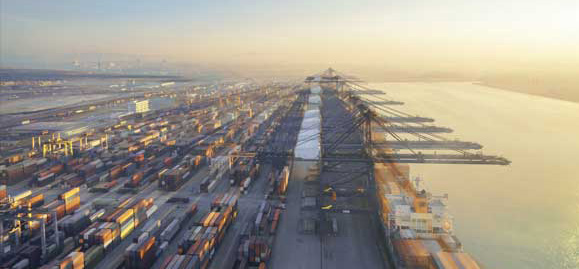- Article

- Balancing Supply & Demand
- Managing Supply Chain
Why RCEP could be a game changer for Australian businesses
The massive agreement marks a new chapter for trade in the Asia Pacific
The signing of the Regional Comprehensive Economic Partnership (RCEP) in late 2020 became one of the few bright spots in an otherwise tough year for trade. The fact that the deal came after years of protectionism – and involves a diverse group of nations – made it even more remarkable.
RCEP comprises the 10 members of the Association of Southeast Asian Nations (ASEAN) and its five trade partners: Australia, China, Japan, New Zealand and South Korea. The deal aims to facilitate the rules-based expansion of trade and investment in the Asia Pacific. It accounts for about 30 per cent of global population and GDP, making it the world’s largest trade pact .
For Australian businesses, RCEP offers an opportunity to expand in the Asia Pacific’s fast-growing economies.
“This agreement will help Australian companies diversify their business activities across the Asia Pacific, a region where middle-class households are expected to top 120 million by 2025,” says Steve Hughes, HSBC Australia’s Head of Commercial Banking.
“It could prove a catalyst to further liberalise trade and investment in the region to support the economic recovery [after the COVID-19 pandemic],” he adds.
To drive their growth, Australian businesses will need more trade and investment opportunities – and RCEP provides that. Nine of the bloc’s members are among Australia’s top trading partners and account for 58 per cent of its two-way trade and 67 per cent of exports . As these countries rebuild their economies, they’ll require more trade and investment.
Trade in services will play a particularly important role in Asia’s recovery, according to Stuart Tait, HSBC’s Regional Head of Commercial Banking, Asia Pacific .
“Services trade grew 27 per cent faster between 2005 and 2018 than merchandise trade, and COVID is likely to have amplified the shift as international services vendors take advantage of the global shift to digital working,” says Tait.
A milestone for trade
No doubt, the deal has its limitations, including minimal immediate trade gains for RCEP members. Tariffs on goods are generally low in the region, and many of the member countries already have existing free trade agreements (FTAs) with each other. Australia, for example, has FTAs with all 14 other countries in the pact. This means the deal will not lead to substantial tariff cuts for members, making its direct benefits less obvious in the short term.
But this should not diminish this milestone, which came to fruition after eight years of negotiations involving the powerful economies of China, Japan and South Korea. RCEP will set common rules on trade, investment, intellectual property, e-commerce, competition and other aspects across the Asia Pacific’s diverse economies. While implementing this will likely not be easy, it would improve access to other members’ markets and make cross-border supply chains more efficient.
Notably, the deal will align members’ trade rules of origin and make them more business-friendly for countries that already have trade pacts with each other. This should facilitate the easier movement of goods in the region.More opportunities over the long term
RCEP’s economic benefits are mostly long term. A study from the Peterson Institute for International Economics estimates that the deal could deliver US$500 billion a year to world trade in 2030, when it moves into full swing . Trade among the 15 RCEP countries would increase by around US$428 billion as the trade war between China and the United States drives greater interdependence among the bloc’s members.
However, more work needs to be done to realise these gains. RCEP has strong potential to become a foundation for trade and a forum for greater regional cooperation and economic liberalisation. But the pact’s signing was only a start.
To build on the groundwork the deal has laid, two areas particularly deserve more attention:
- Curbing the spread of non-tariff barriers
- Harmonising technical standards and regulations to create a unified and borderless digital ecosystem.
According to Tait, it’s difficult for businesses to fully enjoy the benefits of economies of scale when they have to deal with non-tariff barriers and different digital regulatory regimes.
“The signing has accelerated regional integration and established a benchmark that will pay lasting dividends globally and regionally,” he says. “But we need to build on that momentum, using the habits of cooperation built over the past nine years to continue the work of trade liberalisation.”
Find out how RCEP could benefit your business and how HSBC can help you expand your trade in the Asia Pacific’s fastest-growing economies.



